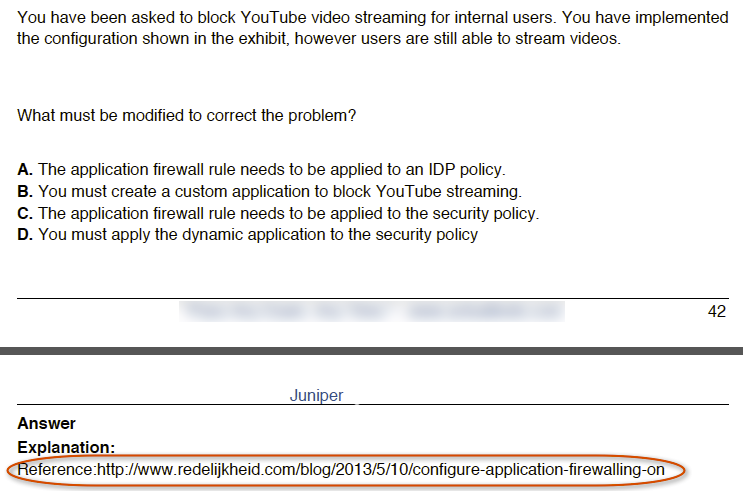Last week I fiddled with the IDP functionality on my SRX100H. I eventually installed a modified version of the so-called "Recommended" IDP policy. The full Recommended policy consumes to much memory on the SRX100H, so I had to remove some rules.
After installing the IDP policy I 'configured' Splunk to run reports on IDP Attack Events (IDP Attacks in the last 24 hours). This way I have a nice overview of the detected attacks.
Today I checked the logging, and to my surprise I found several IDP_ATTACK_LOG_EVENT entries in the log. This triggered my curiosity a bit.
Thankfully I use an NTP server for syncing all the devices around the house, so working backward shouldn't be too hard.
The IDP event was triggered by my iMac which had the 192.168.1.109 IP address at the time (hurray for DHCP logging). The reported exploit (HTTP:XSS:HTML-SCRIPT-IN-URL-VAR) is basically website related, so I started to dig through the browser history. Turned out that I visited the Victorinox website at the time looking for winter coats. During my visit at the website I tried to find a local store where they sell these items, but for some reason the 'Store Locator' thingy on the website didn't work. Now the logging explained why it didn't work.
It looks like they use a map-service (hosted on the destination address 199.16.46.10) in combination with some cross-site-scripting to deliver the functionality.
I tested this again, and indeed, every time I go to that website and try to locate a store, the same IDP_ATTACK_LOG_EVENT occurs.
In this case the cross-site-scripting (XSS) is relatively harmless. The use it to display a map with possible stores based on your query. Unfortunately, there are numerous other scenario's where this (XSS) isn't harmless.






